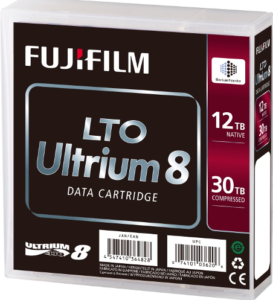LTO-8 Delivers!
By Rich Gadomski
March 19, 2020

As LTO-8 drives and media are increasingly deployed and widely available, the value proposition of LTO-8 is being confirmed by customers and it’s a pretty impressive story.
In the case of a major high-performance computing (HPC) customer who had been using LTO-6 previously for their archive, the jump to LTO-8 has done wonders for their available capacity. With approximately 7,000 slots in their library, fully loaded with LTO-6 media at 2.5TB each yielded a total native storage capacity of 17.5 PB. Migrating to LTO-8 drives and eventually converting those slots to LTO-8 media at 12.0 TB gives them up to a massive 84 PBs, almost a 5X increase. That’s lots of room to scale as needed!
Performance also gets a big boost as LTO-6 drives are rated at 160 MB per second transfer rate compared to LTO-8 drives at 360 MB per second. This means fewer drives are required to meet the same performance objectives. As a result, TCO also gets a major boost as fewer drives, fewer pieces of media and no additional floor space or library frames are required to manage the same amount of data.




 Last year was full of key milestones for the tape storage industry. The cost per terabyte and total cost of ownership (TCO) improved for tape-based storage and archive; tape became firmly entrenched in all of the major U.S. hyperscale data centers; and the tape “air gap” continued to be a compelling tool in combating cybercrime.
Last year was full of key milestones for the tape storage industry. The cost per terabyte and total cost of ownership (TCO) improved for tape-based storage and archive; tape became firmly entrenched in all of the major U.S. hyperscale data centers; and the tape “air gap” continued to be a compelling tool in combating cybercrime.
